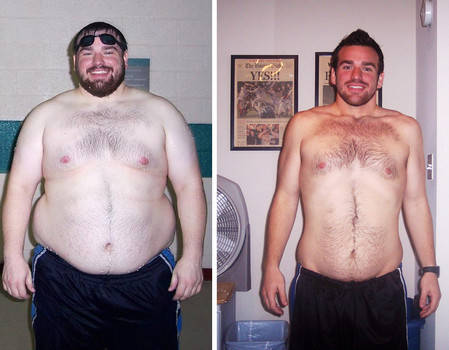Lose Weight > Common Sense To Lose Weight > Common Sense Article > Information About Fitness Training
Information About Fitness Training
Fitness training focuses on aerobic workouts to make the heart stronger and blood circulation better. It makes the supply of oxygenated blood possible to all organs of the body. Fitness training also focuses on a balanced diet. A balanced diet can help on weight loss because it speeds up the body's metabolism. Thus, the body burns more calories. In this general fitness training has even proved helpful for weight loss. Mostly patients that are undergoing a weigh loss treatment are advised by their physicians or dieticians to go for exercise and fitness training. A personal fitness trainer is then able to design a customized fitness training program to help the individual in specific areas. Fitness training also helps when recovering from muscle injury.
A healthy fitness training program should focus on the following elements;
1. Aerobic Fitness: fitness training is for general physical well being. Aerobic workouts are the key for achieving this goal. Aerobics train the body to breathe faster and deeply. This increases the supply of oxygenated blood to the body. More specifically, fitness training with a good aerobic workout strengthens the heart, lungs and blood vessels transport oxygen throughout the body. It increases the body's stamina and makes doing the routine physical tasks much easier. You may be surprised at how you rise to unexpected physical challenges, like catching the bus! Your ideal aerobic workouts are running, jogging, swimming, etc.
2. Muscular Fitness: muscular fitness is also an important aspect of fitness training. Although the purpose of fitness training is not body building or weight training, but a small portion of the routine which is dedicated to training the muscles will increase lean muscle mass, decrease body fat and help to burn more calories. Muscle tissue is inherently active. Whether you're doing something or not, your muscles are burning calories. So the more lean muscle you acquire, the faster the calories will be burnt. You needn't go to the gym for this; home made weights such as plastic water bottles filled with sand or water, or resistance bands are great for this type of muscle fitness.
3. Stretching: most of the aerobic and strength building workouts will cause your muscles to contract. Stretching is therefore necessary to increase the muscles flexibility. Stretching exercises should be done both before and after the workouts. Taking up activities such as yoga and tai chi are also great for stretching.
4. Core Fitness: core muscles are the muscles in your abdomen, lower back and pelvis. These support the body's balance and stability. Core muscles, therefore, have to be strengthened during fitness training. Abdominal crunches and tai chi are a great way of doing this. Working out on the fitness ball is great too.
Related Articles
-
Amino Acids
Amino acids are the chemical units or building blocks, as they are pop
-
Elite Weight Loss
The Science Behind the Elite Weight Los
-
Avoid The Thirties Fat Traps
Its amazing how excess weight creeps up on you in your thirties withou
-
Simple and But Effective Tips On How to Lose Belly Fat
If we call our life erratic, then the bl
-
19 quick fire ways to get fat!
Do you feel like you are doing everything right to lose the weight
-
Breakfast Of Champions: 4 Energizing Meals
A boost of energy first thing in the morning is somethin
- DON'T MISS
- Diet And Weightloss Start Your New Year Off Right
- Clever Diet Hints
- Metabolic Typing Diet Test Programs
- Lose Fat Not Weight
- Weight loss foods for men
- 10 ways to boost calorie burn at the gym
- Health Canada Warns Against Meiti Xing
- How To Deal with Cravings for Food During Weight Loss
- Gastric Bypass Surgery Will Change The Way You Think
- Ab Workout, How To Get A Six Pack The Right Way




